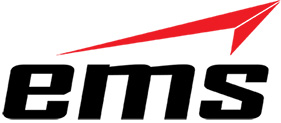
Robot or animatronic dinosaurs aren’t a new thing: they have been used in films, museums and traveling exhibitions for years but how accurate are any of them. Certainly most including even those used in films such as Jurassic Park are based on science, at least to a reasonable extent. While there are some things about the appearance we will never know, the one thing scientists know a lot about is dinosaur’s skeletal structure and how bones would fit together.
Scientists now want to build robotic dinosaurs with a skeleton matching the real thing that will allow scientists to see how dinosaurs would move. Currently this has been done on computer simulations but both for studying and for exhibiting and educating having a physical model is a big advantage, even if it is scaled.
To create accurate bones it is a matter of making copies of existing dinosaur bones, including full fossilized skeletons. To do this using traditional techniques would be a relatively simple process were it not for the fact that the bones must not be damaged which could easily be done using molds, you could also only get models on a 1 to 1 scale. Because full skeletons are so rare any potential damage to the fossils is simply not an option.
The techniques scientists are now looking at draw upon the latest rapid prototyping techniques and start by digitizing the bones; by digitizing what we mean is scanning a bone to create a digital 3D file. This technique is often used in rapid prototyping and reverse engineering, the great advantage though is that it is done with lasers meaning that the bones won’t be damaged as they don’t even need to be touched or handled. The laser maps every detail of a bone and creates a very detailed 3D file. This file can then be manipulated using CAD tools including making changes to the scale and repairing any damage that may exist.
With this file a copy can then be made using 3D printing, 3D printing is another technique that has been developed primarily within rapid prototyping but which is increasingly finding more uses.
Modern 3D printing is very accurate and also surprisingly fast and cheap, this means that a bone that comes out and needs to be reprinted, for example because damage hasn’t been repaired in the file, can be reprinted very easily.
In rapid prototyping 3D printers help companies develop products quicker and work with models during the design process rather than relying on drawings and 3D models on screen. Like with rapid prototyping many other areas such as biology including various sciences can benefit from the same techniques when understanding not the design of the product but as in this case the design of a creature.
There are no limits using 3D printing to how many copies are made either, while some 3D printers are made for rapid prototyping and are relatively slow, advanced printers can perform 3D printing at a speed and cost making it comparable with using mass production techniques for low production runs.
Paleontologist Kenneth Lacovara is the main force behind the project and has for years been trying to discover more about how dinosaurs, especially larger sauropod dinosaurs such as Diplodocus and Brontosaurus, stood, moved and reproduced.
Using CAD it is even possible to ‘fill in the gaps’ with incomplete skeletons and to use the models to put together previously unassembled skeletons. Skeletons though then have joints added and the robots are fleshed out and motors added to replace the main muscle groups.
In the future Lacovara and this team plan to take things further; building from the skeleton they hope to create models of how the respiratory and vascular systems would have been: designed using dimensions from the skeletons as a starting point they will eventually be printed using 3D printing techniques.

